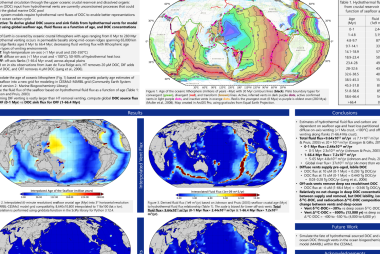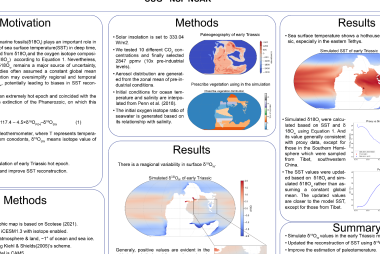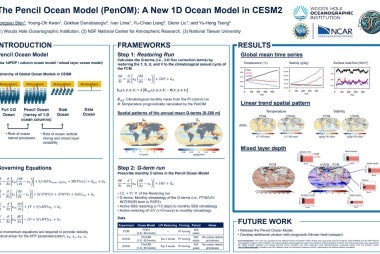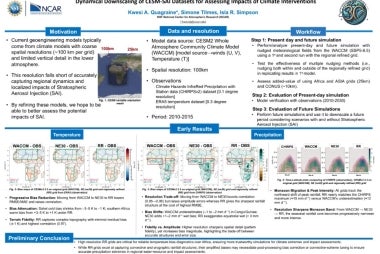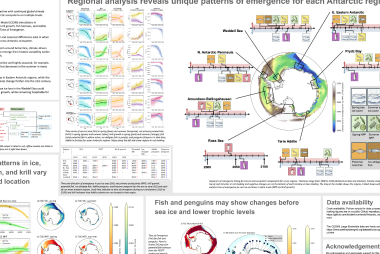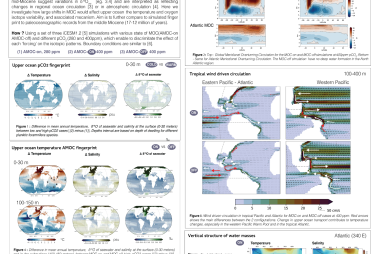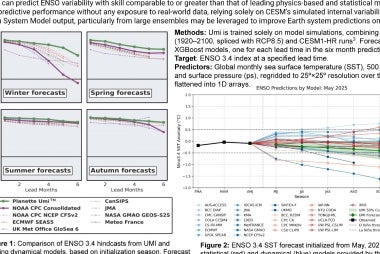CESM Workshop 2025 Posters
View the posters below that were submitted by participants of the 2025 CESM Workshop.
A list of all poster submissions can be viewed in the spreadsheet below.
* Clicking on an image will trigger larger view
Simulating Water Isotopes in the Early Triassic Using iCESM1.3: Implications for Paleotemperature Reconstruction
